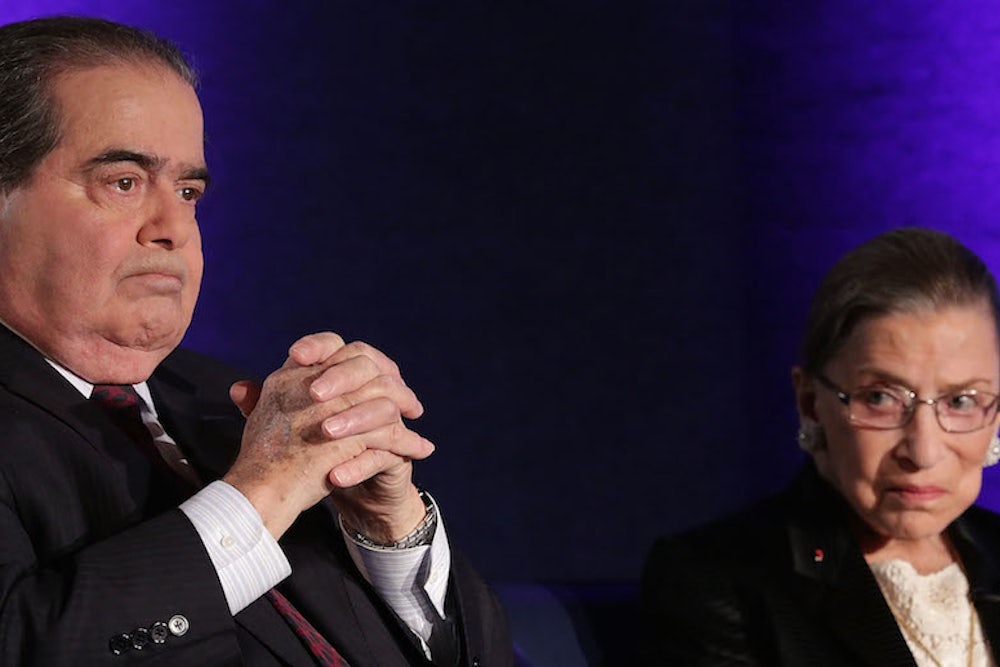Judges use analogies to determine what law applies to new technology. Is the Internet more like a book, or like a street corner? Is your smart phone like a pack of cigarettes in your pocket, or like the filing cabinet you keep locked up at home? Does a new technology fit into an existing box, or is it so paradigm-shifting that it requires a new set of rules?
Yesterday, the Supreme Court issued two decisions that touched on cloud computing. In Riley, the Court reasoned that cloud computing shifts the paradigm in privacy law. But in Aereo, a copyright case, the Court refused point-blank to consider the consequences for the cloud. The decisions are starkly different. They show two different understandings of how courts should be involved in regulating new technology. One shows a Court unafraid of addressing change (Riley), and the other (Aereo) a Court clinging to an outdated legal model and refusing to provide guidelines for technology already in widespread use.
In Riley, the Supreme Court held that police cannot search the content of an arrestee’s cell phone without a warrant. An earlier Court in an earlier case held that police officers could open and search a cigarette pack found in an arrestee’s coat pocket. For much of the opinion, Chief Justice Roberts explains how a cell phone is nothing like a cigarette pack. Cell phones are “based on technology nearly inconceivable just a few decades ago.”
Cell phones shift the legal paradigm. And cloud computing contributes to that shift. Not only do cell phones have immense storage capacity—far more than the wallet into which one tucks a personal photo or two—but phones also provide access to information stored in the cloud. The police are no longer searching the limited effects on a person, but reaching beyond physical proximity into the immensity of the cloud. Thus the Court held that new technology breaks the existing framework, and a different rule applies to your cell phone than to a container on your person.
In contrast, the Court found on the same day that Aereo’s technology was not paradigm-shifting in the copyright context. The question again before the Court was whether a new technology looked sufficiently like an older one, or required a new rule because its features change the calculation. The majority refused to address the potential for paradigm shifting, while the dissent recognized what was happening and addressed it head-on.
Aereo allows its subscribers to watch free broadcast TV. Unlike cable companies, Aereo does not pay licensing fees to copyright holders. But Aereo claimed it did not have to, because its technological model is different from cable: It doesn’t broadcast simultaneously into everyone’s household, but allows subscribers to access content stored remotely. It looks a whole lot like the cloud.
The Court not only found that Aereo’s technology was not paradigm-shifting—it resolutely refused to address how its holding applies to other technologies that are. The majority held that Aereo was sufficiently like a cable company, and so violated copyright law. As for that cloud computing puzzle—does all cloud computing now violate copyright law?—Justice Breyer simply explained that “we cannot now answer more precisely how the Transmit Clause or other provisions of the Copyright Act will apply to technologies not before us.” He offered several muddled stabs at distinguishing cloud computing from Aereo’s technology, including: the history of cable legislation; models where subscribers pay for storage instead of transmission; and clarification that “an entity does not transmit to the public if it does not transmit to a substantial number of people outside of a family and its social circle.”
But the Aereo decision is effectively the copyright equivalent to holding that a flip phone is like a cigarette pack, while refusing to explain how to differentiate a flip phone from a smart phone. In Riley, the Court created a clear rule to govern paradigm-shifting technology. In Aereo, the same Court punted to future decisions for a case-by-case determination of how new technology intersects with the law. As Justice Scalia pointed out in the dissent in Aereo, the majority opinion adopted “an improvised standard ("looks-like-cable-TV") that will sow confusion for years to come.”
Why would the same Court on the same day employ two such different approaches to what effectively amounts to the same technology? The simplest answer would be that the Court was dealing with two different legal regimes: Constitutional privacy law versus statutory copyright. But at the heart of both decisions, the Court was asked to decide whether an old rule applied to a new technology. In one case, the Court was hesitant, tentative, and deferential to the past legal model. And in the other, the Court was unafraid to adjust the legal system for the disruptive technology of the future.
The two cases show a very different institutional understanding of the Court’s role in regulating new technology, which may reveal something crucial about the interplay between courts and Congress. In Riley there was no statutory law in place for dealing with cell phone searches, where in Aereo the Court claimed to defer to Congress. There may be a lesson in all of this: Be careful when wishing, like Justice Alito, for Congress to pronounce new law in an area. Congress can create clear rules now, but new technology will inevitably deconstruct those rules later. And this pair of cases shows that the Court may be more reluctant to recognize big leaps, and adapt the legal system to them, once Congress has spoken.
